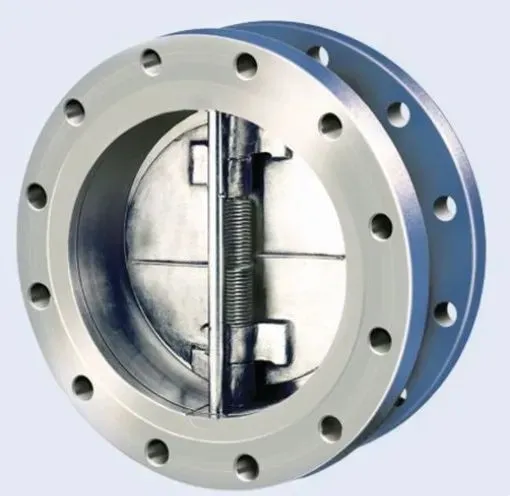Compact Electric Actuator for Precision Control in Modern Applications
The Evolution and Applications of Micro Electric Actuators
Micro electric actuators are miniaturized systems that convert electrical energy into mechanical motion at a microscale. These devices have become increasingly significant in various fields, including robotics, medical devices, consumer electronics, and aerospace engineering. The development of micro electric actuators has revolutionized the industry by providing precise control of movement while maintaining compactness and energy efficiency.
Understanding Micro Electric Actuators
At their core, micro electric actuators function based on the principle of converting electrical signals into mechanical actuation. This conversion can be achieved through various mechanisms, including electromagnetic, piezoelectric, and thermal activation. Among these, piezoelectric actuators are particularly noteworthy due to their ability to produce precise movements in response to electrical stimuli, making them ideal for applications that require high accuracy.
Micro electric actuators are typically composed of materials like ceramics, polymers, and metals, chosen for their specific electrical and mechanical properties. The miniaturization of these components allows for the creation of actuators that are small yet powerful, offering significant advantages in terms of performance and integration into various systems.
Key Benefits
1. Precision and Control One of the standout features of micro electric actuators is their ability to deliver high precision in movement. This level of control is essential in applications such as optical systems and medical devices, where minute adjustments can significantly impact functionality and outcomes.
2. Compact Size The small form factor of micro electric actuators allows for their integration into spaces that were previously deemed inaccessible for traditional actuators. This compactness is crucial in designing lightweight and space-efficient products, especially in aerospace and portable medical devices.
3. Energy Efficiency Micro electric actuators consume relatively low power compared to their larger counterparts while providing adequate force and speed. This energy efficiency is a significant advantage as it helps extend the operational life of battery-powered devices, such as drones or wearable technology.
4. Rapid Response Micro actuators are capable of providing quick response times, an essential feature in applications such as autofocus systems in cameras or precision positioning systems in optics.
micro electric actuator

Applications
Micro electric actuators find their applications across various domains, reflecting their versatility and utility.
- Medical Devices In the medical field, micro actuators are employed in surgical robots, drug delivery systems, and diagnostic equipment. For instance, micro actuators enable precise control of surgical instruments, allowing for minimally invasive procedures that reduce recovery times and improve patient outcomes.
- Robotics The field of robotics benefits significantly from the development of micro electric actuators. They are used in robotic arms, grippers, and autonomous systems, providing the required dexterity and precision to perform complex tasks in unstructured environments.
- Consumer Electronics Many everyday devices, such as smartphones and cameras, utilize micro actuators for features like autofocus, image stabilization, and touch-sensitive screens. The demand for smaller, more efficient components in consumer electronics continues to drive innovations in micro actuator technology.
- Aerospace In aerospace engineering, micro electric actuators contribute to flight control systems, where they are used to adjust control surfaces dynamically. The lightweight and compact nature of these actuators is particularly advantageous in aircraft design, where every gram counts towards performance and efficiency.
Future Trends
The landscape of micro electric actuators is on the verge of further innovation, driven by advancements in materials science, miniaturization, and smart technologies. The integration of artificial intelligence and machine learning into actuator systems stands to enhance their performance, offering not only reactive but also predictive capabilities in various applications.
Additionally, ongoing research into novel materials, such as shape-memory alloys and advanced polymers, is expected to expand the functionalities and efficiency of micro actuators. As industries increasingly prioritize automation and precision, the role of micro electric actuators will undoubtedly become more prominent, paving the way for advancements that can transform our interaction with technology.
In conclusion, micro electric actuators represent a vital component in the drive towards miniaturization and automation across multiple sectors. Their unique attributes, from precision and compactness to energy efficiency, make them a cornerstone of modern technological innovation, paving the path for future developments that will continue to shape our world.
-
Reliable Hydraulic Valves for Efficient Fluid ControlNewsAug.29,2025
-
Reliable Electric Actuators for Industrial Valve AutomationNewsAug.29,2025
-
Premium Line Blind Valves for Secure Pipeline IsolationNewsAug.29,2025
-
Premium Electric Valves for Smart Fluid Control SolutionsNewsAug.29,2025
-
Precision Balanced Valves for Optimal System PerformanceNewsAug.29,2025
-
Heavy-Duty Flanged Butterfly Valves for Water SystemsNewsAug.29,2025
-
Reliable Wafer Type Butterfly Valve - Durable & Space-Saving DesignNewsAug.29,2025




